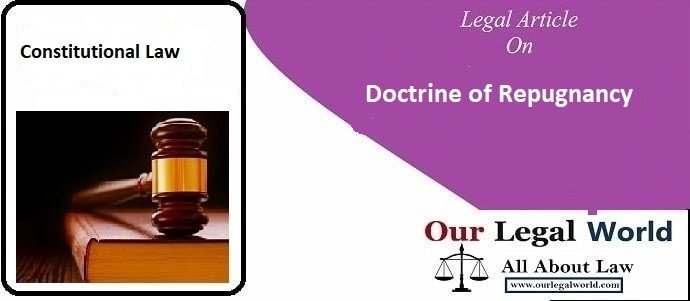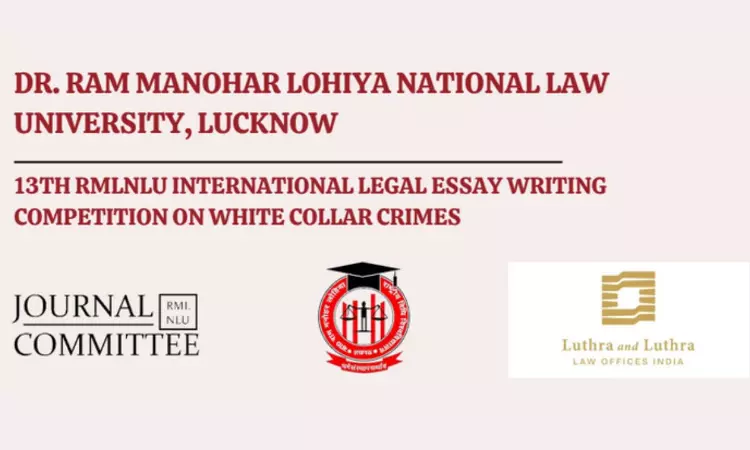Doctrine of Repugnancy in the Indian Constitution
INTRODUCTION
The constitution of India having 395 Articles, 12 Schedules and 8 parts, is known as Lengthiest written Constitution in the world. It took a long duration of 2 years 11 months and 18 days to be formed. Federalism is known as one of the essentials of Basic Structure. Indian Constitution is known as federal Constitution because there is a division of power between Center and States but many jurists were of the opinion that it is amalgamation of Unitary and Federal Structure. Due to this federal structure, many a time’s conflict or collision takes place. To avoid the conflict, Article 254 of the Indian Constitution provides the mechanism for resolution of conflict between the Centre and the State Legislation enacted to with respect to any matter enumerated in List III of Seventh Schedule.
THREE LISTS (Article 246)
Article 246 of Indian Constitution is enshrined in the Seventh Schedule which entails three lists – the Union List, State List and Concurrent List.
The Union List has a range of subjects under which the Parliament can make laws. There are 97 subject- matters in union list. This includes defense, foreign affairs, railways, banking, among others.
The State List, it lists subjects under which the legislature of a state may make laws. Public order, police, public health and sanitation, hospitals and dispensaries, betting and gambling are some of the subjects that come under the state list. There are total 47 subjects in State list.
The Concurrent List includes subjects that give powers to both the Centre and state governments. It consist of 66 Subject matter into Subjects like Education including technical education, medical education and universities, population control and family planning, criminal law, prevention of cruelty to animals, protection of wildlife and animals, forests etc.
DOCTRINE OF REPUGNANCY
Black’s Law Dictionary defines repugnancy as an inconsistency or contradiction between two or more parts of a legal instrument (such as a statute or a contract).
Article 245 states that Parliament may make laws for whole or any part of India and the Legislature of a State may also make laws for whole or any part of the State. It further states that no law made by Parliament shall be deemed to be invalid on the ground that it would have extra-territorial operation.
Article 246 Deals with three lists which provides subject-matters on which whether Centre can make law or State or both.
Doctrine of Repugnancy deals with conflict between two pieces of legislation which when applied to the same facts produce different results. Repugnancy arises when the provisions of two laws are so inconsistent and irreconcilable that it is impossible to do one without disobeying the other.
Article 254 of the Indian Constitution firmly entrenches the Doctrine of Repugnancy in India. This doctrine deals with the conflict of law arises between Center and States.
Article 254(1) states that if any provision of law or law made by the legislature of the State is repugnant to the any provision of law or law made by the Parliament, then the law made by Parliament will prevail over State enacted Law.
Article 254(2) defines that if any provision of law or law made by the legislature of the State on the matter enumerated in concurrent list, is repugnant to the any provision of law or law made by the Parliament and if it has been reserved for the assent of the President and got the assent from the President ten State law will prevail over the law enacted by Parliament. Provided that Parliament at any time before the assent of the President can amend or repeal the repugnant law.
CONDITIONS OF REPUGNANCY
The conditions which must be satisfied before any repugnancy could arise are as follows:
1. Clear and direct inconsistency between the Central Act and the State Act.
2. Inconsistency is absolutely irreconcilable.
3. That the inconsistency between the provisions of the two Acts is of such nature as to bring the two Acts into direct collision with each other and a situation is reached where it is impossible to obey the one without disobeying the other.
JUDICIAL INTERPRETATION OF THE DOCTRINE
In M. Karunanidhi v. Union of India1, the Apex Court reviewed all its earlier decision and summarized the test of repugnancy and defined repugnancy as ;
(a) Where the provisions of a Central Act and a State Act in the Concurrent List are fully inconsistent and are absolutely irreconcilable, the Central Act will prevail and the State Act will become void in view of the repugnancy.
(b) Where however a law passed by the State comes into collision with a law passed by Parliament on an Entry in the Concurrent List, the State Act shall prevail to the extent of the repugnancy and the provisions of the Central Act would become void provided the State Act has been passed in accordance with clause (2) of Article 254.
(c) Where a law passed by the State Legislature while being substantially within the scope of the entries in the State List entrenches upon any of the Entries in the Central List, the constitutionality of the law may be upheld by invoking the doctrine of pith and substance if on an analysis of the provisions of the Act it appears that by and large the law falls within the four corners of the State List and entrenchment, if any, is purely incidental or inconsequential.
Also Read: State of Bombay and Ors. v. F.N. Balsara:- Case Analysis
(d) Where, however, a law made by the State Legislature on a subject covered by the Concurrent List is inconsistent with and repugnant to a previous law made by Parliament, then such a law can be protected by obtaining the assent of the President under Article 254(2) of the Constitution. The result of obtaining the assent of the President would be that so far as the State Act is concerned, it will prevail in the State and overrule the provisions of the Central Act in their applicability to the State only
LEADING CASE LAWS
In Bharat Hydro Power Corpn. Ltd. v. State of Assam2, Court tried to eradicate the conflict between two Acts and reconcile them but both Acts are of different field. The Apex court held that if the two enactments operate in different fields without encroaching upon each other, then there will be no repugnancy.
In Deep Chand v. State of U.P3., nationalization of U.P. Transport Service Act was repugnant to the later added section in Motor Vehicle Act 1939 by the Parliament. Thus the Court held that both the laws were occupied in same field, the State law was void to the extent of repugnancy to the Union Law.
In Zaver Bhai V. State of Bombay4, Bombay legislature found punishment prescribed by Parliament in essential Supplies Act, 1946 inadequate and through amendment they passed an Act by enhancing the punishment. Their Bill was reserved for the assent of the President and they got it also. Later, Parliament also enhanced the punishment of the very Act in 1950. Then Court held that Both the Laws occupied in same field, so the State law became void as being repugnant to the Central Law.
In State of Maharashtra v. Bharat Shanti Lal Shah5, it was held that it is essential that the repugnancy should exist in fact. It should also be clearly and sufficiently shown that the Central and State laws are repugnant to each other
In Security Association of India v. Union of India6, Court was of the opinion that Article 254 is only applicable when the State law is in ‘Pith and Substance’ a law relating to an entry in the concurrent list on which the parliament has legislated.
CONCLUSION
The Constitution of India vests the law-making power between the Union Parliament and State Legislatures and both have the power to make laws. But sometimes conflict took place because of complexity present in the Constitution that’s why Indian Constitution is called as “ Federal having strong centralizing Tendency”.
REFERENCES
*CONSTITUTIONAL LAW OF INDIA by Dr. J.N. Pandey
* Shodhganga
1-AIR 1979 SC 898
2- (2004) 2 SCC 553
3-AIR 1959 SC 648
4-AIR 1954 SC 752
5- (2008) 13 SCC 5
6-AIR 2014 SC 3812








